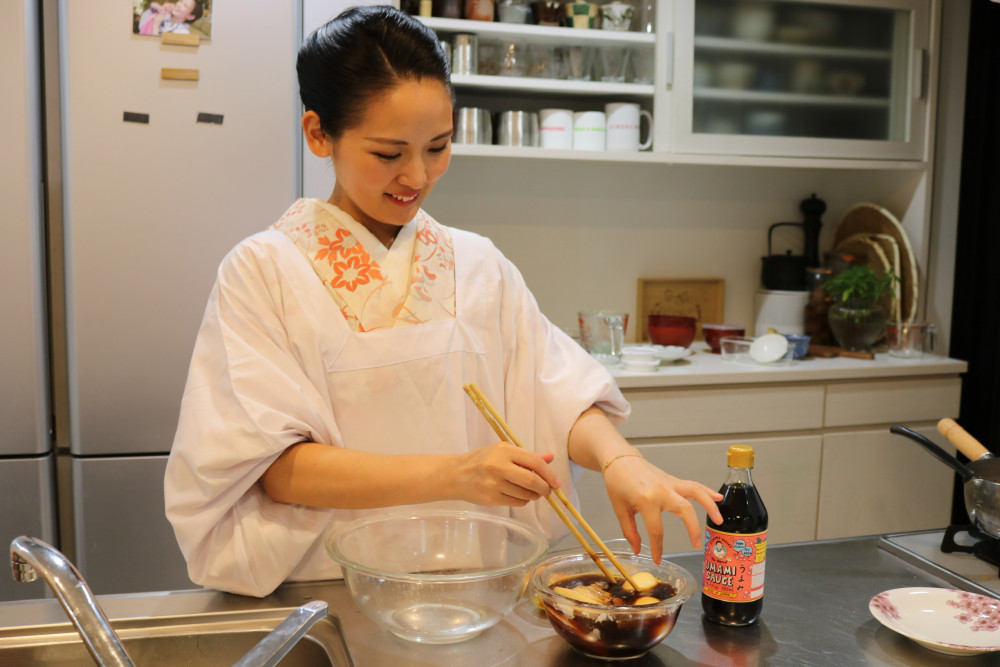
June 28, 2024
Kimono Mom: From Geisha to Global YouTube Sensation
Metropolis Talks Tradition, Responsibility and Gender Roles in Japan with YouTube's Favorite Geisha
Moe, also known as Kimono Mom, is a woman who embodies the essence of traditional Japanese culture. Simultaneously, she embraces the modernity of today’s world. This geisha–turned–social media sensation captivates audiences with a blend of traditional elegance and contemporary motherhood. With nearly six million followers across Instagram and YouTube, Moe’s journey from a young maiko (geisha trainee) in Kyoto to an influential content creator in Tokyo is a testament to her resilience and adaptability.

Early Life as a Geisha
At the age of 15, she left high school to pursue a career as a geisha, dedicating herself to rigorous training in Japan’s cultural arts. “Growing up in Kyoto, I was inspired by the artisans and the people who shaped the city’s culture. Becoming a geisha allowed me to immerse myself in Kyoto’s heritage, which was a great honor,” Moe reflects.
As a maiko, Moe’s days were filled were long and arduous. “I would wake up early every morning to get ready in my kimono before starting my lessons. Mornings started with Nihon buyo (Japanese dance), shamisen (a traditional three-string instrument) and other traditional arts. Afternoons were devoted to cultural activities like sado (tea ceremony). Afterward, I would apply my makeup and prepare my formal kimono to attend the tea house.”

Redefining Freedom
Transitioning from six years of life as a geisha to married life in modern Tokyo was not easy for Moe. “After I left the geisha world, I married. But at the time, I felt lost. Having lost the title of geikosan (geiko: the word for geisha used in Kyoto, san: honorific added to a name), I wondered, ‘What am I?’ That was the difficult part. As a housewife, people only referred to me as someone’s wife, not by my name. I struggled with this because I didn’t know how to present myself. I was always seen as my husband’s wife, not as myself,” Moe explains.
Her then-husband’s conservative views compounded her feelings of entrapment. “He allowed me to attend cooking school but not to work outside the home. I started to feel trapped and longed for freedom, so I divorced him after three years,” she says. But the freedom she longed for came with a price as she went out into the world independently for the first time.
Moe reflects on her challenges with independence, “I was no longer someone’s wife and didn’t know who I was beyond being a geisha and a wife. Without a high school diploma and no regular job experience, finding a house and a job was stressful. I felt like I lacked common sense and didn’t know how to live a normal life, but I did my best.”
For Moe, freedom is intricately linked with responsibility–an underlying theme throughout her story. “I think freedom depends on how you define it. From my perspective, freedom equals responsibility. After getting a divorce from my first husband, I was free to do whatever I wanted. But at the same time, I didn’t have anyone providing for me, so I had to do everything on my own. Freedom for me means taking responsibility for my own life,” she explains. This view contrasts with Western perspectives, which often define freedom as a lack of responsibility.


The Spirit of Culture Passing Through Generations
Moe’s appreciation for Japanese culture is deeply rooted in the way traditions are passed down rather than just the arts themselves. “Of course, I love kimono, but I also love the spirit of Japanese culture itself, especially the way traditions are passed down. Even though it’s changing a bit, I love how older generations teach our traditions to younger generations. Most Japanese traditions, like the sado and shodo (Japanese calligraphy), are preserved this way.”
In 2020, Moe started her YouTube channel, Kimono Mom, to share her love of Japanese culture and home cooking. Differing from the usual Japanese cuisine found in restaurants, Japanese home cooking includes comfort food dishes like nikujaga (Japanese beef stew) or oyakodon (chicken, egg and rice bowl). Cooking for her family gave Moe a sense of clarity and acceptance about her own identity. “After I remarried and had a baby, cooking every meal became part of my daily routine. So, I began filming YouTube videos and cooking Japanese food with my daughter Sutan while wearing a kimono. The name ‘Kimono Mom’ represents my identity as a geisha and as a mom,” Moe explains.

Many of her recipes were passed down from her mother serving as a connection to Japanese culture. “Knowing and reflecting on one’s roots is essential for getting through tough times in life. For me, during my years as a geisha and through my struggles, my mom’s cooking was a source of comfort and strength.” Moe plans to continue this tradition by passing them down to Sutan as well. “My videos are a love letter to Sutan. She can watch them in the future and see how much she was loved and cared for.”
Motherhood and Entrepreneurship Go Hand-In-Hand
While traditional gender roles remain prevalent in Japan, the Kimono Mom channel shows that being a stay-at-home mom and an entrepreneur are not necessarily mutually exclusive. While Moe takes on both of these roles she also points out that there is nothing wrong with moms who choose not to work. For Moe, the most important thing is that the person is doing what they want to do.

Moe explains, “My mom was a very traditional housewife who always stayed home to care for her children and husband. In Japan, we have a saying, ‘three steps behind,’ meaning wives walk three steps behind their husbands. Growing up, I didn’t like that and often encouraged her to present herself more and go out. However, after becoming a mom, I came to respect the way she lived and how she sacrificed herself for the happiness of her child and husband. Although I wouldn’t do it the same way, I respect her choice because it was what she wanted to do and what she believed in.”
In her own family, Moe and her husband share responsibilities based on their day-to-day lives. “So, it’s not about gender, really. In my family, when my husband is busy, I handle the cooking and housework. But if I am busy, he helps out. My family is a team, including Sutan,” she says.
Looking to the Future
With a 95% overseas viewership, Moe aspires to continue breaking down cultural barriers and sharing her roots with the world. Her followers often tell her that they watch her videos not just to learn about Japanese culture, but because it reminds them of their own mothers or inspires them to cook for their children.

The realization that people all over the world wanted to try her cooking inspired Moe to create Umami Sauce, a substitute for the typical Japanese dashi (fish base) and mirin (rice wine for cooking) condiment that caters to various dietary needs. “Many of my followers have told me they wanted to make Japanese food but couldn’t find the ingredients or couldn’t eat it because of their dietary restrictions. This inspired me to create my Umami Sauce, which is vegan, gluten-free and non-alcoholic. Everyone’s voice is in that bottle,” she explains.
Moe’s fans have met her Umami Sauce with enthusiasm, selling out online after just a few days in the U.S. “Some people who bought my Umami Sauce were moved to tears, thanking me for making it. That was an eye-opening moment for me and it became my mission. I am committed to delivering Umami Sauce all over the world to everyone who is waiting for it,” she says. The positive feedback and emotional thank-you messages have reinforced her mission to share Japanese home cooking with the world.


Another example of how freedom comes with responsibility, Moe is committed to seeing her goals through. Although balancing everything perfectly remains a challenge, she strives to do her best, often sacrificing sleep and rest to pursue her dreams.
Moe’s story is a testament to the power of embracing both tradition and modernity as well as freedom and responsibility. “When I started my YouTube channel, I promised myself that I wouldn’t go halfway, so I need to see it all the way through until I’ve delivered Umami Sauce to everyone who is waiting for it.”
Kimono Mom:
IG: @kimono_mom
YouTube: @KimonoMom
kimonomom.com/
Interested in Japanese cooking? Check out our article Inaka Recipes: Suiton and Japan’s Lost Tradition of Wild Food







